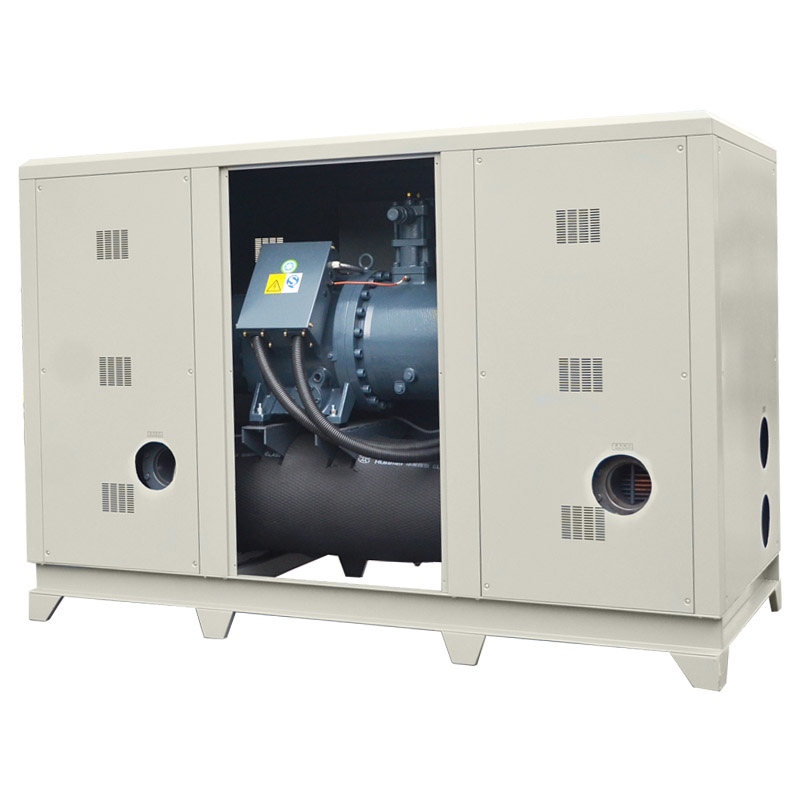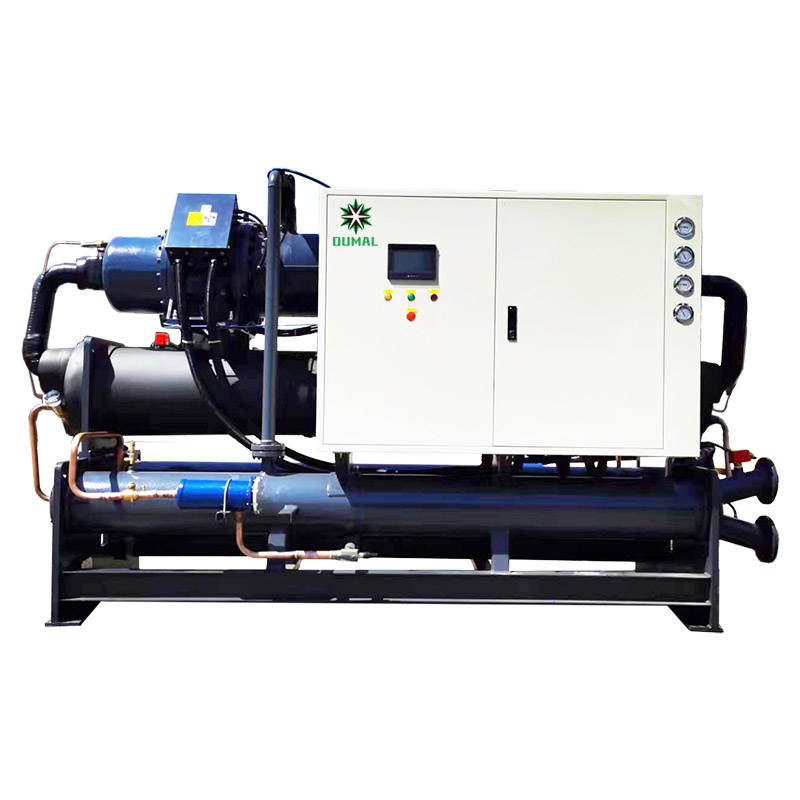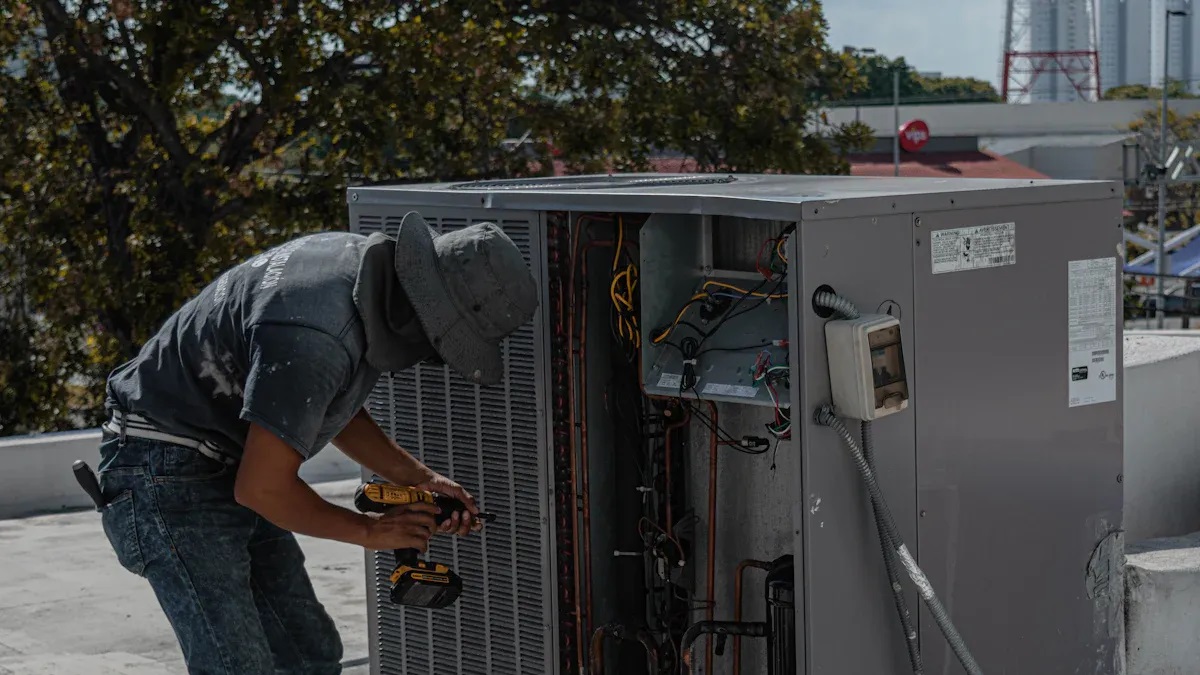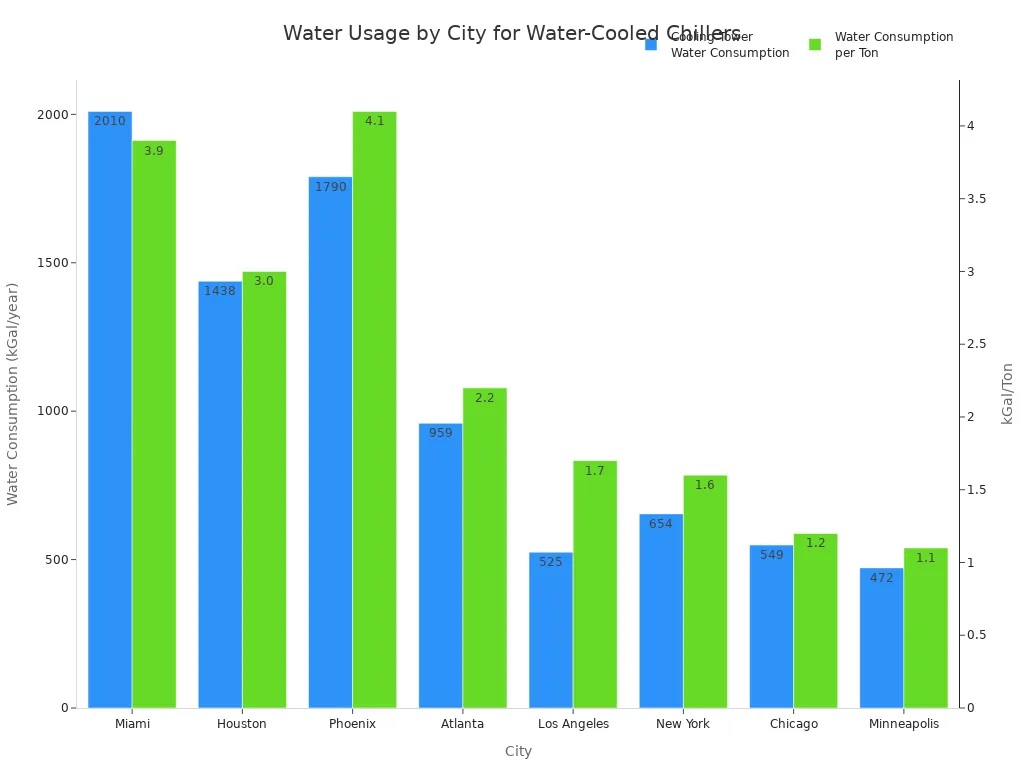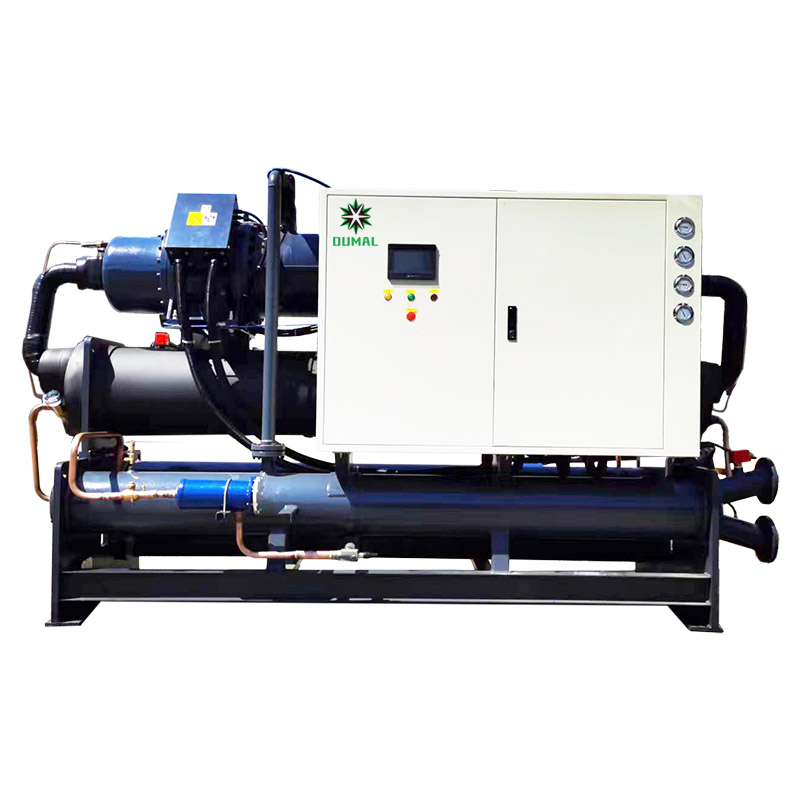You need cooling that works well in a big building. A water-cooled screw chiller gives strong cooling for large spaces. It is good when you need the temperature to stay the same. Many reports talk about two main benefits:
|
Benefit |
Description |
|---|---|
|
Environmentally Friendly |
Uses less energy, so it helps the planet. It also uses water well, which makes it even better for the environment. |
|
Consistent Performance |
Gives steady cooling, which is important for places like data centers. |
Always follow the best steps and listen to the maker’s instructions when you install it. This helps it work well for a long time.
Key Takeaways
-
Water-cooled screw chillers use less energy and help the environment. They can lower your energy bills and make less pollution. These chillers give steady cooling all the time. This makes them good for big places like hospitals and data centers. It is important to install them the right way. You need a strong base and enough room. Always follow the maker’s rules to stop mistakes. Check the chiller every day and get it looked at once a year. This helps it work well and last longer. Smart controls can make the chiller work better and save energy. This makes your cooling system more useful.
Water-cooled Screw Chiller Basics
What Is a Water-cooled Screw Chiller
A water-cooled screw chiller helps cool big buildings. It chills water and moves it through pipes. This keeps rooms at the right temperature. Hospitals, malls, and office towers use these chillers. You can choose chillers from 50 Ton to 850 Ton. Pick the size that fits your building.
The main parts of a water-cooled screw chiller work together in a cycle. Here is a table that shows what each part does:
|
Component |
Function |
|---|---|
|
Compressor |
Pulls in cold refrigerant gas and squeezes it. This makes the gas hot and under high pressure. |
|
Condenser |
Cools the hot gas so it turns into a liquid. |
|
Thermal Expansion Valve |
Controls how much refrigerant goes into the evaporator. It checks the heat of the gas. |
|
Evaporator |
Takes heat from the chilled water. This makes the refrigerant turn into cold gas. |
|
Return and Repeat |
The cold gas goes back to the compressor. The cycle starts again. |
How Screw Compressors Operate
Screw compressors are inside the chiller. They use two spinning screws to squeeze the refrigerant gas. This makes the gas hotter and under more pressure. Screw compressors work quietly and smoothly. They give high cooling power and save energy. Here is a table to compare screw compressors with other types:
|
Feature |
Screw Compressors |
Reciprocating Compressors |
|---|---|---|
|
Capacity |
High cooling power |
Lower cooling power |
|
Operation |
Works smoothly |
Not as smooth |
|
Energy Efficiency |
Saves more energy |
Uses more energy |
|
Size |
Smaller size |
Bigger size |
|
Noise Level |
Makes less noise |
Makes more noise |
|
Complexity |
More parts inside |
Fewer parts inside |
Key Features and Benefits
Water-cooled screw chillers have many good features. Here are some important ones:
-
Saves energy and lowers your power bills.
-
Keeps big spaces cool and comfortable.
-
Smaller size makes it easier to install.
-
Screw compressors work well and last long.
-
Smart controls help you use the system easily.
-
Easy to check and fix problems fast.
-
Lasts longer so you do not need many repairs.
-
Good heat exchanging parts help with bad water.
-
You can change the chiller to fit your building.
Tip: Try to get chillers with smart controls and strong parts. These help your system work well for a long time.
Why Choose Water-cooled Screw Chillers
Comparison with Other Chiller Types
You might ask how this chiller compares to others. The main difference is with air-cooled chillers. Look at the table to see what makes them different:
|
Comparison Aspect |
Water-Cooled Chiller |
Air-Cooled Chiller |
|---|---|---|
|
Initial Cost |
Costs more because it needs extra equipment |
Costs less since it has fewer parts |
|
Operating Cost |
Uses less energy in big buildings |
Uses more energy, especially when it is hot |
|
Efficiency |
Works better in places with steady temperatures |
Does not work as well when it is very hot |
A water-cooled screw chiller costs more at first. But you save money later because it uses less energy. This is why it is a good choice for big buildings.
Advantages for Large Buildings
If you need to cool a big building, you want a system that works well and is quiet. Water-cooled screw chillers have many good points:
-
They cool better because water moves heat faster than air.
-
They are quieter, so you do not hear loud fans.
-
They work well even when it is very hot outside.
Tip: Pick this chiller if you want steady cooling and less noise.
Energy Efficiency
You want to spend less on energy. Water-cooled screw chillers help you do that. They use a cooling tower to cool water better than air-cooled chillers. This means they use less energy to cool the building. Over time, you pay less for energy. You also help the planet by using less power.
You can count on a water-cooled screw chiller to give strong and steady cooling. It saves energy and works well in big buildings.
Pre-installation Planning
Assessing Cooling Needs
Before you install a chiller, you need to know how much cooling your building needs. Start by looking at the total heat load. This includes heat from machines, lights, and people inside the building. You should also check for heat coming from outside, like sunlight through windows. Use these steps to guide your planning:
-
Calculate the cooling load for your building.
-
Check energy efficiency ratings, such as the Coefficient of Performance (COP), to see how much energy the chiller will use.
-
Think about capacity and if you might need more cooling in the future.
-
Make sure the chiller is easy to maintain and that parts are available.
-
Look at the total cost, not just the price to buy the chiller, but also the cost to run and maintain it.
-
Identify all heat sources, both inside and outside.
-
Choose the right type of chiller for your needs.
-
Know the flow rate and the temperatures you want for the water going in and out.
Tip: A good plan now helps you avoid problems later.
Site Selection and Plant Room Design
You must pick the right spot for your chiller. The plant room should be safe and easy to reach. Follow these steps for a good setup:
-
Select a location with good airflow and enough space for workers to move around. Avoid hot areas.
-
Build a strong, level foundation to hold the chiller’s weight.
-
Connect water and power supplies safely and securely.
-
Install high-quality pipes and check for leaks.
-
Test the system to make sure it works well and does not leak.
A well-designed plant room makes it easier to keep your chiller running smoothly.
Compliance and Safety
You need to follow rules and standards when you install chillers. These rules help keep people safe and make sure the chiller works well. Here are some important standards:
|
Standard/Regulation |
Focus/Description |
|---|---|
|
ISO 5151 |
Tests cooling capacity and energy efficiency. |
|
ISO 13256 |
Sets design and performance rules for water-cooled units. |
|
ASHRAE 90.1 |
Lists energy efficiency needs for buildings. |
|
ASHRAE 15 |
Covers safety for refrigerant leaks and ventilation. |
|
EN 378 |
Covers safety, energy use, and environmental impact. |
|
Montreal Protocol |
Phases out harmful refrigerants. |
|
Electrical Safety |
Protects against shocks and fires. |
|
Mechanical Safety |
Prevents access to moving parts and keeps the chiller stable. |
|
Energy Labeling |
Shows energy efficiency for buyers. |
|
MEPS |
Sets minimum energy performance standards. |
Note: Always check local codes and ask experts if you are not sure about a rule.
Step-by-step Installation Guide for Water-cooled Screw Chiller
You want your building to stay cool. This guide shows you how to install a water-cooled screw chiller. Follow each step to make sure you do it right.
Foundation Preparation
Begin with a strong base. The chiller needs a flat and sturdy floor. You can use concrete or other tough materials. Put the chiller on a concrete floor that is level within 6mm. For bigger chillers, build a concrete base with a 50-100mm gap. Fill this gap with sand or pitch. The gap helps stop vibration and keeps the chiller steady. A good base stops movement and damage when the chiller runs.
-
Use concrete for a strong base.
-
Make sure the floor is flat before you start.
-
Fill the gap with sand or pitch for support.
Tip: A strong base helps your chiller last longer.
Positioning and Mounting
Now, put the chiller in the plant room. Leave enough space around it for workers and air to move. Place the chiller where people can reach it easily. Attach the chiller tightly to the base. Use bolts and brackets that the maker suggests. Check that the chiller is straight to avoid bending the frame.
-
Leave space for workers to get to the chiller.
-
Use strong bolts to hold the chiller.
-
Make sure the chiller is straight.
Utility Connections
Connect water and power to the chiller. Use good cables and pipes. Follow safety rules for electricity. Make sure the water supply fits the chiller’s needs. Check that all connections are tight and do not leak. Label each connection so you know what it is for later.
-
Use safe cables and pipes.
-
Connect water pipes to the right places.
-
Test for leaks after you connect everything.
Piping Installation
Put in pipes carefully. Pick pipes with the right size for your system. Connect pipes using normal ways for chilled water and cooling water. Add pipes that help stop vibration. Put a filter at the water inlet and clean it often. If your water is not good, use Y-type filters and check them a lot. Build and install pipes by following national rules.
-
Pick pipes that match your chiller’s power.
-
Connect pipes the right way.
-
Add filters and clean them to keep water clean.
-
Use vibration pipes to protect the evaporator.
Note: Clean filters and good pipes help your chiller work well.
Vibration Isolation
Vibration isolation keeps your chiller and building safe. Pick isolators like rubber mounts or springs based on the chiller’s size and weight. Put isolators between the chiller and its base. Follow the maker’s instructions for lining things up. Stop vibration problems by checking system frequencies. You can change these by adjusting mass or stiffness.
|
Method |
Description |
|---|---|
|
Vibration Isolator Selection |
Choose isolators that fit the chiller’s size and weight. |
|
Installation |
Put isolators between the chiller and base, following instructions. |
|
Avoiding Resonance |
Check and change system frequencies to stop vibration problems. |
|
Frequency Analysis |
Look at the system to find natural frequencies. |
|
Modifying the System |
Change mass or stiffness to fix vibration issues. |
System Testing and Commissioning
Test the system before you use it. Start with checks before turning it on. Look at all papers and check the setup. Test pipes and connections for leaks. Check oil levels and water flow. Turn on the chiller and watch how it works. Use flow meters to see if water flow is right. Check the compressor’s spin and oil after starting. Run the chiller for 30 minutes and change settings if needed. Make the system better by changing controls and checking building system links. Teach workers and give them all papers.
-
Check the setup and test for leaks.
-
Look at oil levels and water flow.
-
Turn on the chiller and watch how it works.
-
Use flow meters to test water flow.
-
Check compressor spin and oil after starting.
-
Run the chiller for a while and change settings.
-
Teach workers and give them papers.
Tip: Always test the system before using it fully. This step helps you find problems early and makes sure your chiller works well.
You now have a simple step-by-step guide for installing your water-cooled screw chiller. Follow each step and use good methods. This helps you get a good installation and strong cooling for your building.
Tips for Successful Installation
Avoiding Common Mistakes
You want your chiller to last a long time. Making mistakes during installation can cause problems. Many people forget to check the base before putting in the chiller. If the base is not flat or strong, the chiller can shake or break. Some people do not read the manufacturer’s instructions. This can cause wrong connections or a bad setup. Always follow the steps from the maker.
Leave enough space around the chiller for workers. Tight spaces make fixing and checking hard. Workers need room to reach all parts. Another mistake is using pipes that do not fit the chiller’s size. Pipes that are too small or too big can leak or lower cooling power.
Tip: Check every step twice when installing. Ask for help if you are unsure about a part or connection.
Maintenance Planning
Regular care helps your chiller work well. You need a plan for daily, monthly, and yearly tasks. This helps you find problems early and avoid big repairs. Check the inlet and outlet temperatures every day. This shows if the chiller is cooling right. Look at water strainers each month to keep water clean and stop clogs. Test phase rotation and check the expansion valve every month. These steps help the chiller stay safe.
Some jobs need to be done once or twice a year. Use ultrasonic leak testing to find hidden leaks. Take oil samples and send them to a lab. Pressure wash the microchannel coil to clean off dirt. Update the software on control systems to keep the chiller smart.
Here is a table to help you plan your maintenance:
|
Maintenance Task |
Frequency |
|---|---|
|
Daily checks (inlet/outlet temps) |
Daily |
|
Inspecting water strainers |
Monthly |
|
Testing phase rotation |
Monthly |
|
Checking expansion valve response |
Monthly |
|
Ultrasonic leak testing |
Annual/Bi-annual |
|
Oil sample laboratory analysis |
Annual/Bi-annual |
|
Microchannel coil pressure washing |
Annual/Bi-annual |
|
Software updates on control systems |
Annual/Bi-annual |
Note: Clean water helps your chiller last longer. Always check water quality and clean filters often.
Performance Optimization
You can help your chiller work better and save energy. Use smart controls that change how the chiller and cooling tower run. Extremum Seeking Control (ESC) uses feedback from power use to find the best way to work. This can save up to 40% energy in medium chiller plants. Small plants may save about 20%. Another way builds an energy model for your building. It looks at the thermal load and weather to find the best settings. This saves energy and lowers greenhouse gas emissions.
Here is a table with some top optimization techniques:
|
Optimization Technique |
Description |
Energy Savings |
|---|---|---|
|
Extremum Seeking Control (ESC) |
Uses feedback from total power use to make chiller and cooling tower work better. |
Up to 40% for medium chiller plants, about 20% for small chiller plants. |
|
Energy Optimization Methodology |
Builds an energy model to set the best chiller plant settings based on thermal load and weather. |
Saves lots of energy and lowers greenhouse gas emissions. |
Check the controls often and update them when needed. Watch how the chiller reacts to changes in weather or building use. Change settings to keep cooling steady and save energy.
Tip: Use smart controls and keep software updated. This helps your chiller save energy and work better.
You can avoid problems and keep your chiller working well by following these tips. Good installation, regular care, and smart optimization make your system strong and reliable.
Chiller Application Case Study
Project Overview
You can learn from real building projects. In one big building, the team picked water-cooled screw chiller technology. They used EWWD-VZ chillers with inverter technology. This helped the system save energy and work well. The design made sure it ran well at part load. This lowered how much it cost to run. The building needed to be quiet, so the team put in a soundproof system. They also used reclaimed refrigerants to help the environment. The project met LEED standards for energy efficiency and sustainability.
|
Key Element |
Description |
|---|---|
|
Advanced Chiller Technology |
EWWD-VZ water-cooled chillers with inverter technology for top performance. |
|
Energy Efficiency |
System works well at part load, reducing costs. |
|
Noise Attenuation |
Soundproof system keeps noise low for mixed-use buildings. |
|
Environmental Impact Considerations |
Reclaimed refrigerants lower environmental impact. |
|
Compliance with LEED Standards |
Project meets LEED certification for sustainability. |
Installation Challenges
You may face hard problems when installing a chiller. In this project, water rules made things tough. The rules did not allow a big cooling tower or adiabatic cooling system. The team had to find a new way. They added high efficiency air cooled chillers to work with the water-cooled screw chiller. This smart idea helped them meet the building’s cooling needs and follow the rules.
Results and Lessons Learned
After the chiller was installed, the building improved a lot. City water use dropped from 6,650,000 gallons to only 150,000 gallons. The yearly cost savings reached $65,000. These results show a good chiller system saves money and protects resources.
|
Metric |
Before Installation |
After Installation |
Change |
|---|---|---|---|
|
City Water Consumption |
6,650,000 gallons |
150,000 gallons |
Decrease of 6,500,000 gallons |
|
Yearly Cost Savings |
N/A |
$65,000 |
N/A |
You can learn important lessons from this project. Make sure all equipment arrives on time to avoid delays. Stay flexible with your schedule if something unexpected happens. Use energy-efficient technology like CO2 sensors and enthalpy controls to make your system better.
|
Lesson Learned |
Description |
|---|---|
|
Timely Delivery of Equipment |
Get all parts on schedule to keep the project moving. |
|
Flexibility in Scheduling |
Adjust plans when problems come up, like factory shutdowns. |
|
Energy-Efficient Tech Implementation |
Use smart controls to save energy and lower costs. |
Tip: Plan ahead and use smart technology. You will get better results and save more in the long run.
You can keep big buildings cool if you do these things: First, make sure the area is flat and has lots of space. Put in anti-vibration devices to stop shaking. Next, set up water pipes like the manufacturer’s diagram shows. Clean the water pipes before you use them. Test the pipes to make sure they work right. Insulate cold parts so you do not lose energy.
Good planning and regular care help chillers work well and last longer. If your project is hard, ask experts for help to keep things safe and working their best.
